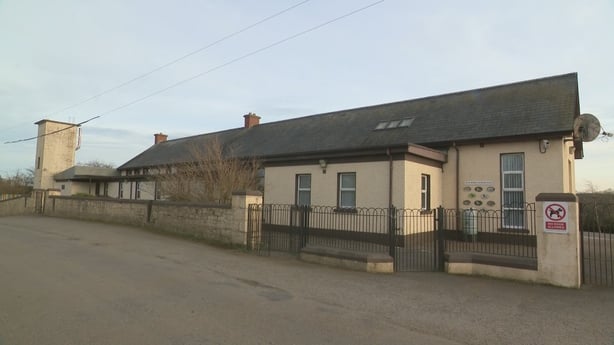The role that the primary school plays in nurturing and even creating a sense of community in a local area cannot be underestimated.
It is where small children gather together and develop friendships that may endure a lifetime. It's where their parents meet too and establish vital networks of support.
44% of our primary schools are classed as 'small', with four or fewer mainstream teachers or around 100 or fewer pupils, and in many rural communities, who may have lost pubs or post offices or shops, their small school is a precious sign of life.
Smaller primary schools may cost more to run than larger ones, but it is hard to argue that in ways less tangible they provide value, helping to sustain local communities in so many ways.

But where is the tipping point? A school with 80 or even 40 children is very different to a school with only 10 or five or fewer still.
At what point does the vastly disproportionate cost of maintaining and running those schools become questionable? And at what point does the well-being of children come into play?
Of course there will always be a need to support extremely small primary schools located on islands or in very isolated parts of the country, or in Gaeltacht areas.
But few of the very small schools on the Department of Education database fall into this category. Most are mainland mixed Catholic primary schools not very far from another school just the same as them.
Is it fair to have as few as two children attending one school when more than 100 play in a schoolyard less than a kilometre away?
Read more: Five schools have more staff than pupils - Dept of Education
School is where our children learn vital socialisation skills, they learn to play and get along together. But a system that allows schools that tiny to continue, even if just for one year, is denying some this vital companionship.
The National Parents Council is concerned about this.
While fully supportive of smaller schools, and their importance in local communities, when it comes to tiny schools its CEO Áine Lynch puts its simply: "Children need to be in a school where there are other children. They have to be able to find other children that they have things in common with."
The principal of one very small school, who did not want to be identified, draws a distinction between a school of around 20 or more pupils and one that is a lot smaller.

"If you have 20 to 25 pupils it's amazing. You have five-year-olds interacting with 12-year-olds, it's like a big family. A child can be themselves. They don't have to 'follow the crowd' because there isn't a crowd," they said. But this principal draws a line at smaller because of the limited scope for children to form friendships.
Then there is the cost. These extremely small schools are entitled to significantly higher staffing rates proportionally. Is it fair to keep open a school when staff literally outnumber pupils?
And then there is day-to-day funding; because buildings cost the same to heat and insure regardless of whether there are two or 60 pupils, all schools - no matter how small their enrolment - are paid capitation and ancillary grants as if they have an enrolment of 60 at a minimum.
So a school with two pupils gets the same as a school with 60.
The Department of Education has said that one of five mainland schools with an enrolment of just two – Stonetown National School in Co Louth - will close next year.
Ballyfad National School in Co Wexford also announced last week that it will close.
The future of Flemby National School in Co Kerry – which had solar panels funded by the Department installed on its roof just in the past year or so - is also "under consideration" according to its patron, the Catholic Diocese of Kerry.
Who is responsible for deciding to shut a school because it is no longer viable?
The Department of Education, which funds schools, told us that the decision-making authority for a closure belongs to the school patron.
The Patron of Flemby National School - the Diocese of Kerry – told us that school enrolment is a matter for the department.
At a time when primary school pupil numbers are falling, and more schools are likely to struggle in coming years to maintain enrolment, there seems to be no clear rule, and decision-making seems lost between the two pillars of our schools system – the State and the Church.







